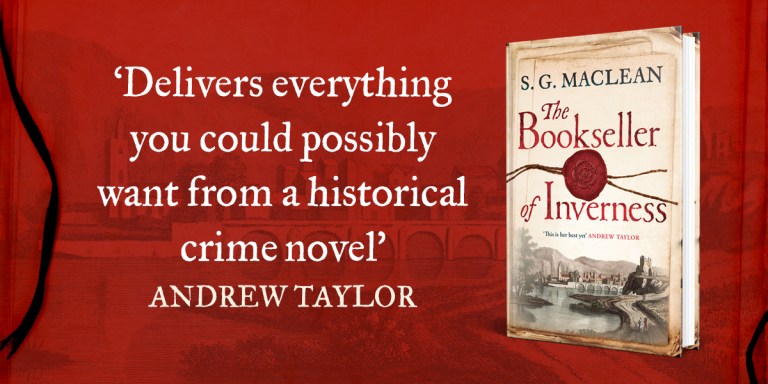Damien Lewis tells us how Italian Resistance and SOE agents were betrayed by Allies

How Allied high command turned their backs on Italian partisans and SOE.
When endeavouring to tell a story that concerns behind the lines raids, partisan armies and epic journeys deep into enemy territory, one invariably bumps up against the shadowy world of intelligence. Any “special operation” will have some ties to this secretive, murky arena of warfare. The mystery men with their hidden agendas pop into the light fleetingly, to give soldiers their targets and orders, only to slide back into the shadows.
My latest book SAS Italian Job is no different; it tells the story of two maverick Special Forces commanders and their private army of veteran raiders combined with unruly partisans, as they attempt one of the most daring raids of the Second World War. Their audacious plan was to attack the German 14th Army headquarters, so creating chaos just before the big push by the Allies into Northern Italy and on to Germany. It was a mission that would be fraught with action, adventure tragedy and betrayal.
Whilst they were trying to fight the war as they believed it needed to be fought, they found they were increasingly butting heads with someone else’s hidden agenda. In early 1945, legendary commander Major Roy Farran of the Special Air Service (SAS) and Captain Mike ‘Wild Man’ Lees of the Special Operations Executive (SOE) hadn’t yet realised they would be stepping on the toes of British Intelligence and clashing with their own Government, even as the war in Europe neared a close.
Up until late 1944 the western allies had a “come one, come all” policy concerning support to any resistance groups keen to fight the Nazi’s. It didn’t matter what side of the political spectrum they hailed from, left or right. Churchill was adamant: arms and support were to be provided to such resistance forces, to aid in the Allied cause. Agents of the SOE – Churchill’s shadowy Ministry for Ungentlemanly Warfare – or its American counterpart, the Office of Strategic Services (OSS), were embedded with these groups, training them in weapons and explosives use, ambush, sabotage and assassination – in fact anything they could contrive to turn a group of civilians into an underground army.
This doctrine was exactly what Farran and Lees believed they were following when they armed and trained the Italian partisans, preparing to point their newly-hewn spear directly at the heart of German command and control. Their idea was simplicity itself: cut off the ability of the enemy to command or control 100,000 troops, by blowing up its headquarters, and killing as many high ranking German officers as possible.
But unbeknown to these two adventurers, the doctrine had been changed. Not officially, but as more of a secret discussion amongst shadowy intelligence services, leading to a sudden truncation of supplies, transport or weaponry for the partisans in Italy. Positive press coverage for Italy’s – largely communist – partisans was quietly suppressed. One Canadian reporter, Paul Morton, was shocked that the stories he had risked his life to capture behind enemy lines when living with the Italian partisans were suddenly killed, never to see publication. When he tried to take matters into his own hands, he found himself blacklisted and cast as a liar, destroying his career and reputation. What circumstances had changed the attitude of the British Government from one of enthusiastic support to one of outright enmity?
British Intelligence had spent most of its history tracking and combating two major groups. During the First and Second World Wars its main target was Germany. However before, and during the inter war period they had reverted to their main target, Communism, and stopping its spread. With the end of WWII in sight, MI5, MI6, and the British Government – who had never stopped spying on the Soviets – were dialling back the anti-German rhetoric and action, in favour of taking a keener interest in their old enemy, the Soviets. The strained relationship that had lasted since mid-1941 was one of necessity, based upon the age-old adage that the enemy of my enemy is my friend. It came to a close in the rush to shore up Western Europe against communism, at war’s end.
Trust in the alliance had been steadily chipped away at through the war. One watershed moment was the discovery of the bodies of thousands of Polish officers in the forest of Katyn, in Russia, in 1943. When Russia had invaded the eastern half of Poland during 1940, they had rounded up anyone they thought constituted a problem – military officers, priests, and university lecturers, who were executed and buried. Knowing full well that these executions had been carried out by Stalin’s NKVD (Secret Police), the Nazis used this to try and drive a wedge between the Western Allies and Stalin. The Polish Government in exile pushed Churchill to denounce the murders, but Churchill knew that he needed Stalin’s forces fighting on the Eastern Front, and so dodged the issue.
However, behind closed doors these murders and Stalin’s lies concerning the fate of thousands of Polish soldiers were known to British Intelligence. The Soviets had executed all those who would have made up any opposition to Soviet control, in a Poland under their occupation. What was to stop them doing the same again in countries they had “liberated”, Allied intelligence reasoned? Hence the fears for Italy post-war. The country had the largest contingent of known communists outside of the Soviet Union, and it was a neighbour to the increasingly Soviet controlled Yugoslavia. Though it wouldn’t be liberated by the Soviets, Italy might fall into its sphere of influence, should its post-war government turn out to be avowedly left wing and communist dominated.
The Western Allies had seen civil war erupt in Greece between right and left wing partisans, as soon as the Germans had pulled out. The power vacuum created and the support and training the Allies had given the Greek partisans fuelled the civil war. The Allies wanted to ensure they would avoid a similar situation in Italy.
In late 1944, the British Government instructed its intelligence services to quietly cut support for any partisans they felt would be a problem at war’s end. Requests for any large amounts of explosives or heavy weapons were to be denied. This was intended to cut the amount of arms in the hands of the Italian communists, though it might also risk them not being able to defend themselves against the Nazi occupiers. Many might be killed, including the SOE officers – known as ‘British Liaison Officers’ (BLOs) on the ground – embedded with the partisans. The death of Major Temple, leader of SOE’s Operation Flap, is due to such a covert change in policy. He had been calling for a resupply of arms, to fend off a major enemy attack, but all to no avail. His exploits with the Italian partisans and the failure to re-supply them with weaponry would ultimately play a central role in his tragic death.
Via various Freedom of information requests I managed to get some still-sealed British Government files opened, and discovered that the British were willing to get into bed with some decidely nefarious characters towards war’s end, ones they felt would be useful in their plans for post-war Italy. One such file, closed until 2050 until I had it opened, spoke of a “proposal put to the Chief of Staff, to make contact with the Italian nobleman Prince Borghese, with the intention of encouraging anti-scorch measures and assisting in the maintenance of law and order”. Don Junio Valerio Borghese – nicknamed ‘The Black Prince’ – hailed from a titled Italian family with close ties to the Vatican. He’d served as a Naval Commander under Mussolini and was a hard-line Fascist. Upon the Italian surrender to the Allies in September 1943, Borghese had signed a treaty with the Kriegsmarine – Nazi Germany’s navy – raising an 18,000-strong force that would remain loyal to Hitler until the bitter end.
The proposed approach to Prince Borghese was to be made in March 1945, whilst we were still at war with the Nazis, and whilst Roy Farran and Mike Lees were in the field fighting that war at the sharp end. British Intelligence was now playing a double game. By contacting Italy’s foremost allies of Nazi Germany, it was betraying its long standing relationship with Italy’s partisans. This is but one example: there were many more.
As matters transpired the communist wing of the Italian partisans quietly handed its weapons in at the end of the war, seeking to gain power – if at all – via democratic means. Roy Farran and Mike Lees would successfully navigate this double game, to pull of one of the most audacious raids in the history of WWII, but they would not come away unscathed. Farran was inadvertently protected by the Americans, when he was awarded a high-valour medal for the 14 Army HQ raid. But Lees would see his career in SOE disavowed, and his future in the military and even his reputation destroyed.







